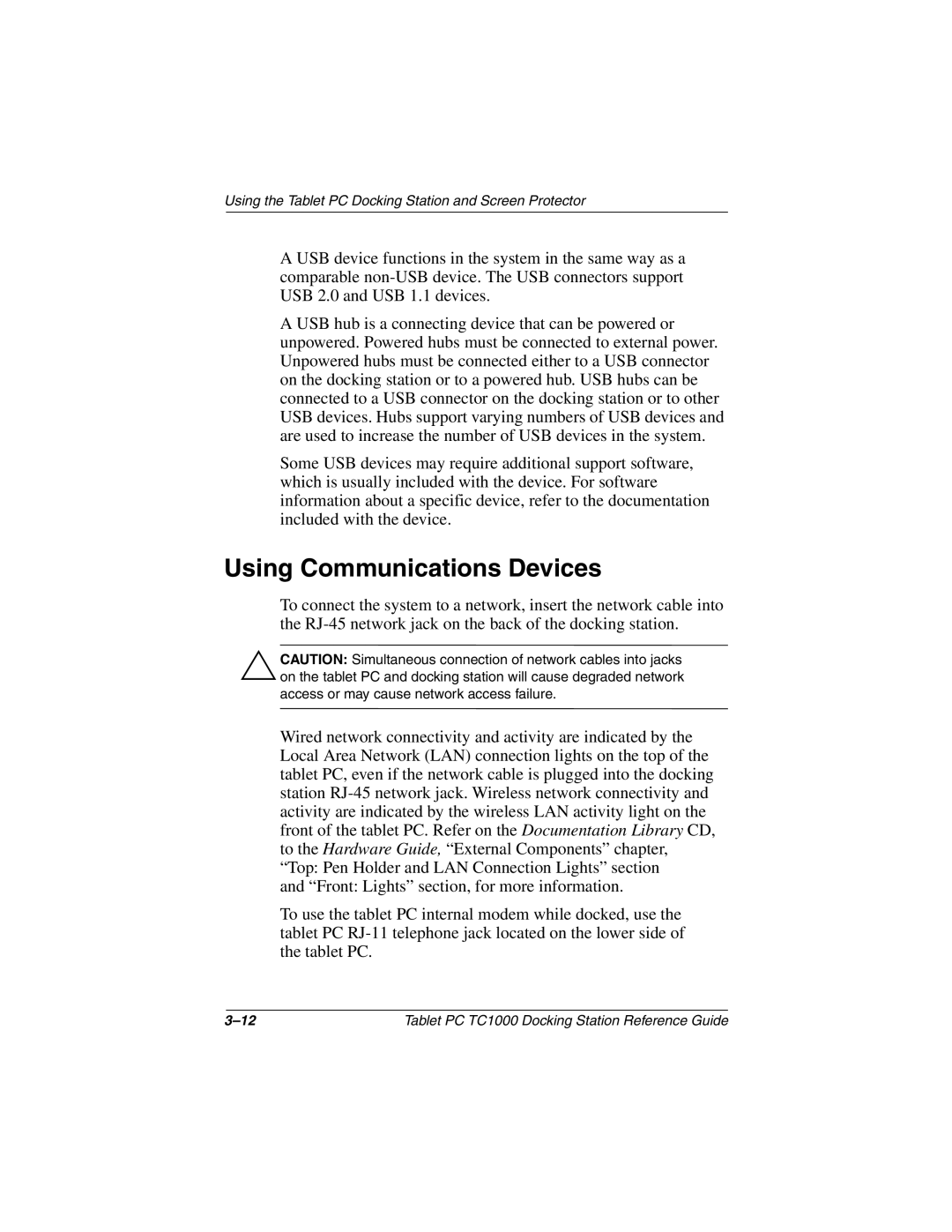
Using the Tablet PC Docking Station and Screen Protector
A USB device functions in the system in the same way as a comparable
A USB hub is a connecting device that can be powered or unpowered. Powered hubs must be connected to external power. Unpowered hubs must be connected either to a USB connector on the docking station or to a powered hub. USB hubs can be connected to a USB connector on the docking station or to other USB devices. Hubs support varying numbers of USB devices and are used to increase the number of USB devices in the system.
Some USB devices may require additional support software, which is usually included with the device. For software information about a specific device, refer to the documentation included with the device.
Using Communications Devices
To connect the system to a network, insert the network cable into the
ÄCAUTION: Simultaneous connection of network cables into jacks on the tablet PC and docking station will cause degraded network access or may cause network access failure.
Wired network connectivity and activity are indicated by the Local Area Network (LAN) connection lights on the top of the tablet PC, even if the network cable is plugged into the docking station
and “Front: Lights” section, for more information.
To use the tablet PC internal modem while docked, use the tablet PC
Tablet PC TC1000 Docking Station Reference Guide |
